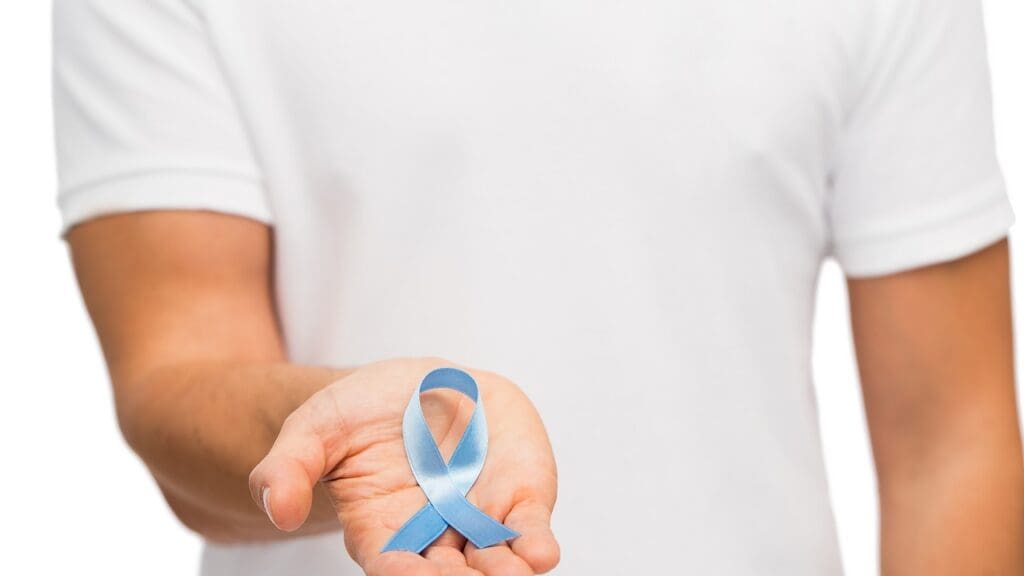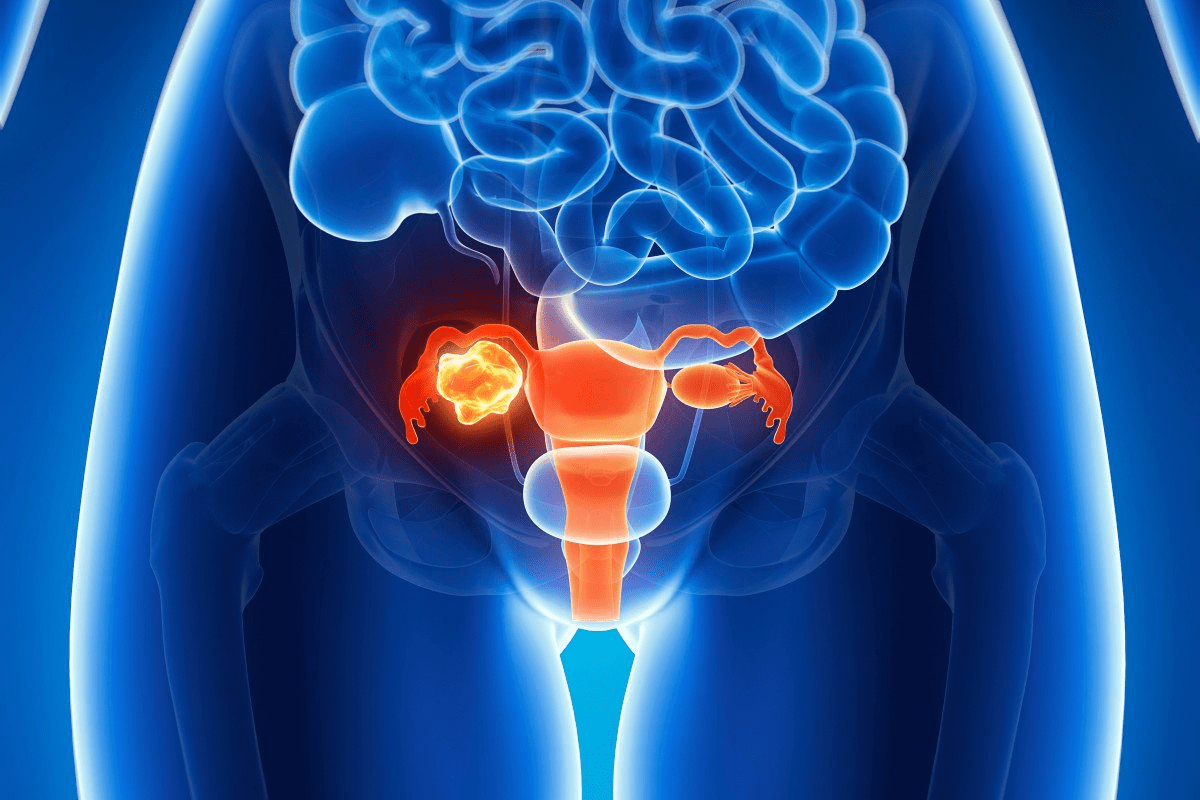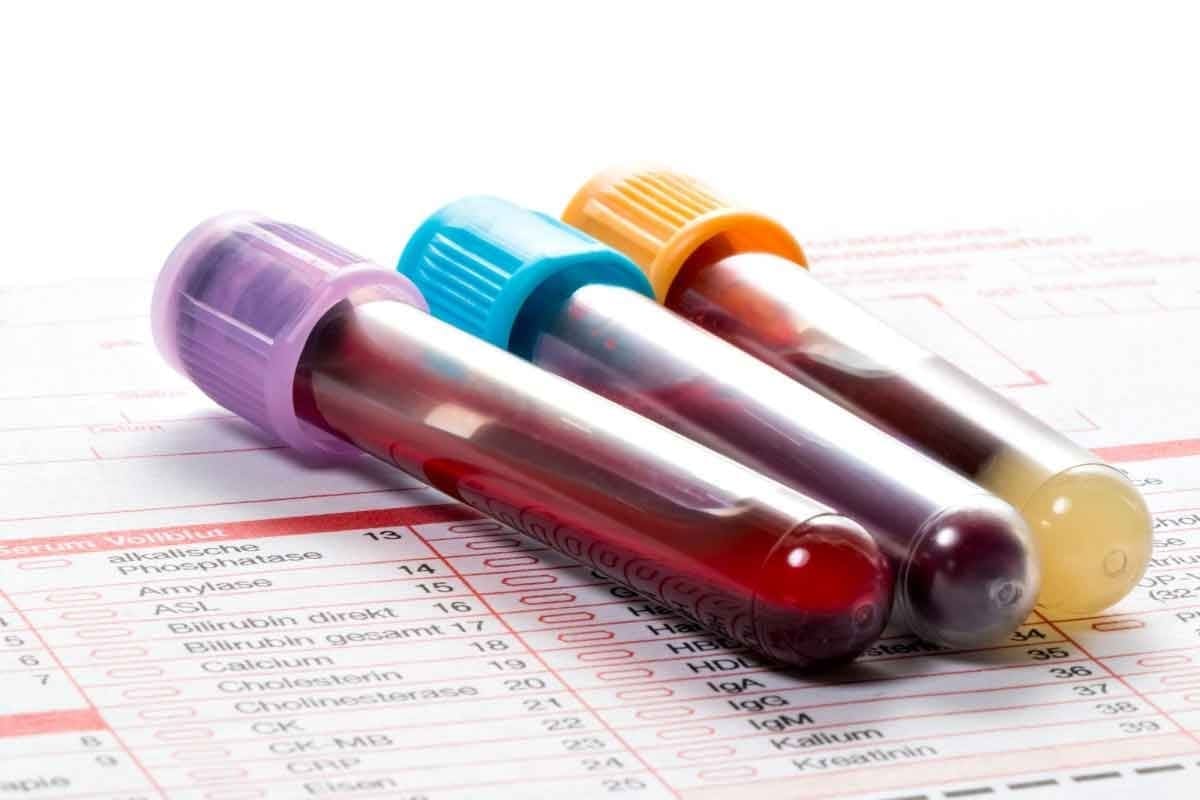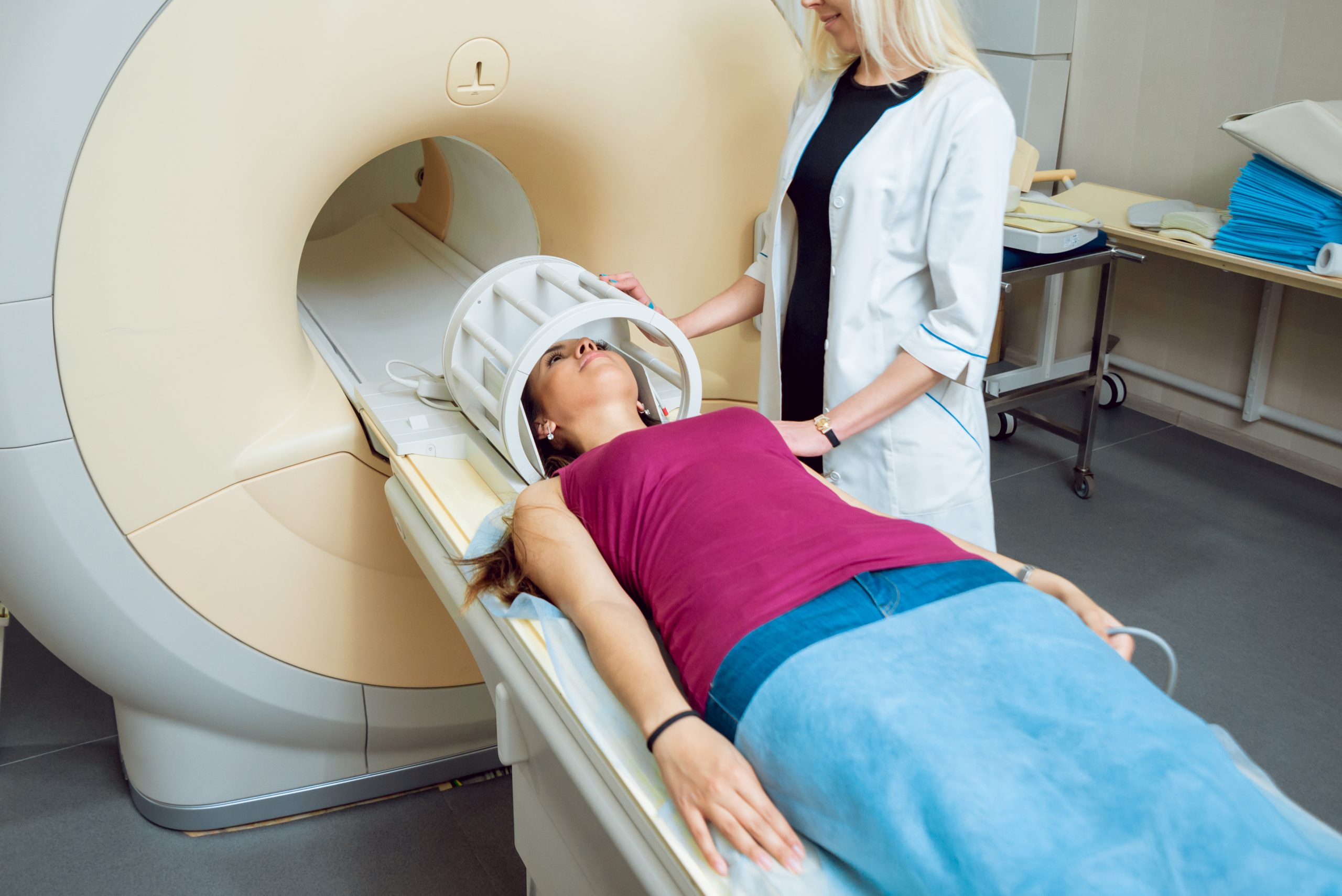Last Updated on November 27, 2025 by Bilal Hasdemir

When facing prostate cancer, knowing about androgen deprivation therapy is key. At Liv Hospital, we focus on safe and effective treatments. We make sure our care is based on solid evidence and tailored to each patient.
Androgen deprivation therapy is a mainstay for treating advanced prostate cancer. It works by lowering male hormone levels, which slows cancer cell growth. We’ll share important facts about these drugs, showing their role and benefits in prostate cancer treatment.
Key Takeaways
- Androgen deprivation therapy is a key treatment for advanced prostate cancer.
- Lowering male hormone levels helps slow cancer cell growth.
- Liv Hospital offers evidence-based care and patient-focused protocols.
- Safe and effective treatments are available for prostate cancer management.
- Understanding treatment options is vital for patients facing prostate cancer.
Understanding Prostate Cancer and Hormone Dependency
It’s key to know how hormones and prostate cancer are linked for good treatment. Prostate cancer grows because of hormones, like testosterone. We’ll see how these hormones help cancer grow and when we need hormone therapy.
The Role of Testosterone in Prostate Cancer Growth
Testosterone is a hormone that helps prostate cells grow. In prostate cancer, it makes cancer cells grow faster. High testosterone levels can make hormone-dependent prostate cancer cells grow more, which is why it’s so important.
- Testosterone promotes the growth of prostate cancer cells.
- Androgen deprivation therapy (ADT) aims to reduce testosterone levels.
- Lowering testosterone levels can slow down or stop the growth of prostate cancer.
When Hormone Therapy Becomes Necessary in Treatment
Hormone therapy, or ADT, is needed when prostate cancer is advanced or has spread. ADT is a treatment that lowers male hormones, like testosterone, which help prostate cancer cells grow. By reducing testosterone, ADT can slow the disease’s growth.
We decide if hormone therapy is needed based on the cancer’s stage and grade, and the patient’s health. Knowing when to start hormone therapy is key for managing prostate cancer well.
What is ADT? Defining Androgen Deprivation Therapy
Androgen Deprivation Therapy (ADT) is a key treatment for prostate cancer. It’s used for advanced or hormone-sensitive cases. ADT lowers male hormones, or androgens, which prostate cancer cells need to grow.
The Science Behind Testosterone Suppression
ADT works by reducing testosterone levels. This slows down or stops prostate cancer cell growth. Medications block testosterone production or its action on cancer cells. The goal is to deprive prostate cancer cells of the hormones they need to grow.
Historical Development of ADT for Prostate Cancer
The idea of ADT started in the 1940s. It was noticed that prostate cancer could regress with castration or estrogen therapy. Now, ADT has evolved with LHRH agonists and antagonists. These can achieve chemical castration without surgery.
Statistics on ADT Usage in Prostate Cancer Patients
ADT is a common treatment for prostate cancer. Studies show many prostate cancer patients get ADT. About 50% of cases use ADT, showing its key role in fighting the disease.
Common ADT Drugs Used in Prostate Cancer Management
Androgen Deprivation Therapy (ADT) is key in fighting prostate cancer. It uses different drugs to lower testosterone levels. These drugs help slow down tumor growth. Let’s look at the types of ADT drugs and their roles in treating prostate cancer.
LHRH Agonists: Leuprolide (Lupron), Goserelin (Zoladex)
LHRH agonists first raise testosterone levels but then lower them. Leuprolide (Lupron) and Goserelin (Zoladex) are examples. They are given by injection, usually monthly or every few months.
LHRH Antagonists: Degarelix (Firmagon)
Degarelix (Firmagon) blocks LHRH directly, lowering testosterone right away. It’s good for those who might have problems with the initial testosterone rise from LHRH agonists.
Anti-Androgens: Bicalutamide (Casodex), Flutamide
Anti-androgens block testosterone from reaching androgen receptors. Bicalutamide (Casodex) and Flutamide are examples. They’re often used with LHRH drugs to block androgens more effectively.
First-Generation vs. Second-Generation Anti-Androgens
First-generation anti-androgens like Flutamide are mostly replaced by second-generation ones. Second-generation anti-androgens, like Enzalutamide (Xtandi), block androgens better and are used for advanced cancer.
Choosing the right ADT drug depends on many things. These include the cancer stage, patient health, and possible side effects. Doctors and patients work together to find the best treatment plan.
ADT Drug Administration: Injection Methods and Schedules
ADT drugs can be given through injections or pills, each with its own benefits. The choice depends on the drug type, patient preference, and treatment plan.
Understanding 1-Month, 3-Month, and 6-Month Formulations
LHRH agonists, like leuprolide and goserelin, are often given as injections. These come in 1-month, 3-month, and 6-month forms. How often you get an injection depends on the type and your treatment plan.
| Formulation | Injection Frequency | Examples |
|---|---|---|
| 1-Month | Every 1 month | Leuprolide (Lupron) |
| 3-Month | Every 3 months | Goserelin (Zoladex) |
| 6-Month | Every 6 months | Leuprolide (Eligard) |
The Injection Process and What Patients Can Expect
The injection is usually given in the office. It might hurt a bit, but the pain is short-lived.
Oral ADT Options and Their Administration
Anti-androgens, like bicalutamide and flutamide, are taken by mouth. You might need to take them once or twice a day. Always follow the dosage and schedule your doctor gives you.
Managing ADT treatment can be tough. Our healthcare team is here to help and support you every step of the way.
Treatment Protocols: Continuous vs. Intermittent ADT
Androgen Deprivation Therapy (ADT) is key in treating advanced prostate cancer. There are two main ways to do this: continuous and intermittent therapy. The choice depends on the patient’s health, cancer stage, and treatment side effects.
Benefits and Drawbacks of Continuous Therapy
Continuous ADT means always taking ADT drugs without stopping. The main plus is it keeps testosterone levels low, helping to slow cancer growth. But, it can cause side effects like hot flashes, tiredness, and less sex drive. It might also raise the risk of long-term problems like bone loss and heart disease.
Intermittent ADT: Reducing Side Effects While Maintaining Efficacy
Intermittent ADT, by contrast, has treatment cycles followed by breaks. It tries to lessen side effects while keeping cancer under control. Research shows it can make life better by cutting down on side effect time. Yet, how well it works can vary, and it’s important to watch closely when to start treatment again.
How Doctors Determine the Optimal Protocol for Each Patient
Doctors look at many things when picking between continuous and intermittent ADT. They consider the cancer’s stage and how aggressive it is, the patient’s health, and how they react to ADT first. They make treatment plans that work best for each person, aiming to be effective while avoiding too many side effects. It’s key to keep checking in and adjust the plan as needed.
Advanced Combination Therapies with ADT
Advanced combination therapies with Androgen Deprivation Therapy (ADT) have changed how we treat prostate cancer. By mixing ADT with other treatments, doctors can give patients better care.
ADT with Abiraterone (Zytiga): Enhanced Androgen Blockade
One big step forward is using ADT with abiraterone (Zytiga). Abiraterone blocks the enzyme CYP17, which makes testosterone. This makes the androgen blockade stronger. Research shows this combo can help patients live longer and slow down cancer growth.
ADT with Enzalutamide (Xtandi): Targeting Androgen Receptors
Another great combo is ADT with enzalutamide (Xtandi). It targets androgen receptors directly. Enzalutamide blocks androgens from binding to the androgen receptor. This stops tumor growth. Studies have shown this combo greatly improves outcomes for advanced prostate cancer patients.
ADT Combined with Radiation or Chemotherapy
ADT is also paired with radiation or chemotherapy for better results. Recent studies have shown that ADT-based combos are now standard for metastatic castration-sensitive prostate cancer. The timing of these treatments is key to success.
Timing Considerations for Multimodal Treatment
When mixing ADT with other treatments, timing is everything. Doctors must choose the right time to start treatments. This ensures the best results and fewer side effects.
Managing the Side Effects of ADT Drugs
Androgen Deprivation Therapy (ADT) is a key treatment for prostate cancer. But, it has side effects that need careful handling. It’s important to know how to lessen these effects.
Physical Changes: Hot Flashes, Fatigue, and Body Composition
ADT can cause big changes in the body. These include hot flashes, feeling tired, and changes in body shape. Hot flashes can be very uncomfortable and disrupt daily life. Fatigue makes it hard to have energy and feel well.
Sexual Function and Libido Impacts
Sexual problems and lower libido are big worries for ADT patients. These issues can affect a patient’s life in many ways, not just physically.
Cardiovascular and Metabolic Risks
ADT can raise the risk of heart and metabolic problems. It’s key to watch and manage these risks to avoid serious issues later on.
Bone Health and Fracture Prevention
ADT can make bones weaker, leading to osteoporosis and fractures. Keeping bones healthy is very important for patients on this therapy.
Cognitive and Emotional Effects
ADT can also cause changes in thinking and mood swings. It’s important to deal with these effects to keep patients’ quality of life good.
Understanding and managing ADT side effects helps healthcare providers give better care. This improves the life of prostate cancer patients.
Strategies to Minimize ADT Treatment Side Effects
Patients with prostate cancer on ADT may face various side effects. But, with the right strategies, these can be managed well. It’s key to improve their life quality during treatment.
Exercise and Nutrition During ADT Therapy
Exercise and nutrition are key in reducing ADT side effects. Regular workouts help with weight, bones, and energy. Eating well, with lots of fruits, veggies, and whole grains, also helps manage weight and health.
- Aerobic exercises like walking or cycling can improve cardiovascular health.
- Resistance training can help maintain muscle mass and bone density.
- A diet low in saturated fats and high in fiber can help manage weight and improve metabolic health.
Medications and Treatments for Symptom Relief
Many medications and treatments can ease ADT side effects. For example, bisphosphonates prevent bone loss, and some antidepressants help with hot flashes.
“Managing the side effects of ADT requires a multifaceted approach that includes lifestyle changes, medications, and regular monitoring.”
The Importance of Regular Monitoring and Follow-up
Regular check-ups and follow-ups are vital for managing ADT side effects. Doctors can adjust treatments based on how patients react and their side effects.
Support Groups and Psychological Resources
Support groups and psychological resources offer emotional support. They help patients deal with ADT’s mental impact. These resources are very helpful in improving outcomes and life quality.
By using these strategies, patients on ADT can manage their side effects better. This improves their overall well-being.
Patient Selection: Who Benefits Most from ADT Therapy?
The success of ADT in treating prostate cancer depends on choosing the right patients. Androgen Deprivation Therapy (ADT) has changed how we manage prostate cancer, mainly for advanced cases. It’s also used in other stages, requiring careful thought to see who benefits most.
ADT for Advanced and Metastatic Prostate Cancer
For those with advanced or metastatic prostate cancer, ADT is key. It lowers testosterone, slowing cancer growth. Research shows ADT greatly helps these patients, improving their life and survival chances.
ADT in Combination with Radiation for Localized Disease
In localized prostate cancer, ADT is often paired with radiation. This combo is great for high-risk patients. Together, ADT and radiation can better control the cancer and lower recurrence risk.
Risk-Benefit Assessment for Different Patient Profiles
Choosing ADT for prostate cancer patients needs a detailed look at risks and benefits. Age, health, and other conditions are key in deciding if ADT is right.
Age and Comorbidity Considerations
Older or patients with serious health issues need a tailored ADT approach. ADT’s side effects, like bone and heart risks, must be weighed against its benefits. A personalized plan can improve results and reduce side effects.
Deciding on ADT should involve a full review of the patient’s health and preferences. By carefully choosing who gets ADT, doctors can enhance its benefits and reduce risks.
Liv Hospital’s Innovative Approach to ADT Administration
At Liv Hospital, we’re changing how Androgen Deprivation Therapy (ADT) is given to prostate cancer patients. We aim to give top-notch healthcare by always looking for new ways to improve treatments.
Cutting-Edge Protocols and Personalized Treatment Plans
We use the newest ADT methods to make treatment plans that fit each patient’s needs. Our cutting-edge protocols help patients get the best care they can.
Multidisciplinary Care Team Approach
Our team of experts works together to give full care. This multidisciplinary approach makes sure all parts of a patient’s health are looked at during treatment.
Patient Support Services During ADT Treatment
ADT can be tough to go through. That’s why we have a range of patient support services. They help with the physical and emotional sides of treatment.
International Standards and Treatment Outcomes
At Liv Hospital, we follow international standards in our treatments. This means our patients get care that’s among the best worldwide. Our focus on being the best shows in our treatment results.
Conclusion: The Evolving Landscape of ADT in Prostate Cancer Care
Androgen Deprivation Therapy (ADT) is key in fighting prostate cancer. The way we use ADT is changing with new treatments and drugs.
ADT drugs, like LHRH agonists and antagonists, lower testosterone levels. This slows down cancer growth. Adding drugs like abiraterone and enzalutamide makes treatments even better.
The future of ADT in prostate cancer care is bright. Research is ongoing to make treatments better and reduce side effects. At Liv Hospital, we use the latest ADT advancements to help our patients.
We are committed to giving our patients the best care. This means using new treatments and working together as a team. Our goal is to make sure our patients get the best care possible.
FAQ
What is Androgen Deprivation Therapy (ADT) and how does it work?
ADT is a treatment for prostate cancer. It lowers male hormone levels to slow cancer cell growth. It does this by reducing testosterone production or blocking its effects.
What are the common ADT drugs used for prostate cancer management?
Common ADT drugs include LHRH agonists like leuprolide (Lupron) and goserelin (Zoladex). There are also LHRH antagonists like degarelix (Firmagon) and anti-androgens like bicalutamide (Casodex) and flutamide.
How are ADT drugs administered?
ADT drugs can be given as injections or pills. The method depends on the drug and treatment plan.
What are the side effects of ADT treatment?
Side effects may include hot flashes, fatigue, and changes in body composition. They can also affect sexual function and libido. There are risks to the heart, metabolism, and bones.
Can ADT be used in combination with other treatments?
Yes, ADT can be used with other treatments like radiation or chemotherapy. This can make it more effective against prostate cancer.
What is the difference between continuous and intermittent ADT?
Continuous ADT is ongoing treatment. Intermittent ADT stops and starts treatment to reduce side effects. The choice depends on the patient’s needs and doctor’s advice.
How can the side effects of ADT be managed?
Managing side effects includes exercise, nutrition, and medications. Regular monitoring and follow-up care are also important. Support groups and psychological resources can help too.
Who is a good candidate for ADT therapy?
Patients with advanced or metastatic prostate cancer may benefit from ADT. Those with localized disease treated with ADT and radiation might also benefit. The decision is based on a risk-benefit assessment.
What is Liv Hospital’s approach to ADT administration?
Liv Hospital offers a personalized approach to ADT. They have a multidisciplinary care team and patient support services. This ensures complete care during treatment.
Are there new developments in ADT treatment?
Yes, ADT treatment is evolving. New developments and emerging trends include advanced combination therapies and innovative protocols.
References
- National Cancer Institute (NCI): https://www.cancer.gov/types/prostate/prostate-hormone-therapy-fact-sheet
- OncoLink: https://www.oncolink.org/cancers/prostate/treatments/taking-androgen-deprivation-therapy-adt-for-prostate-cancer
- American Cancer Society (ACS): https://www.cancer.org/cancer/types/prostate-cancer/treating/hormone-therapy.html
- National Center for Biotechnology Information (NCBI) / PMC: https://pmc.ncbi.nlm.nih.gov/articles/PMC8702790/








